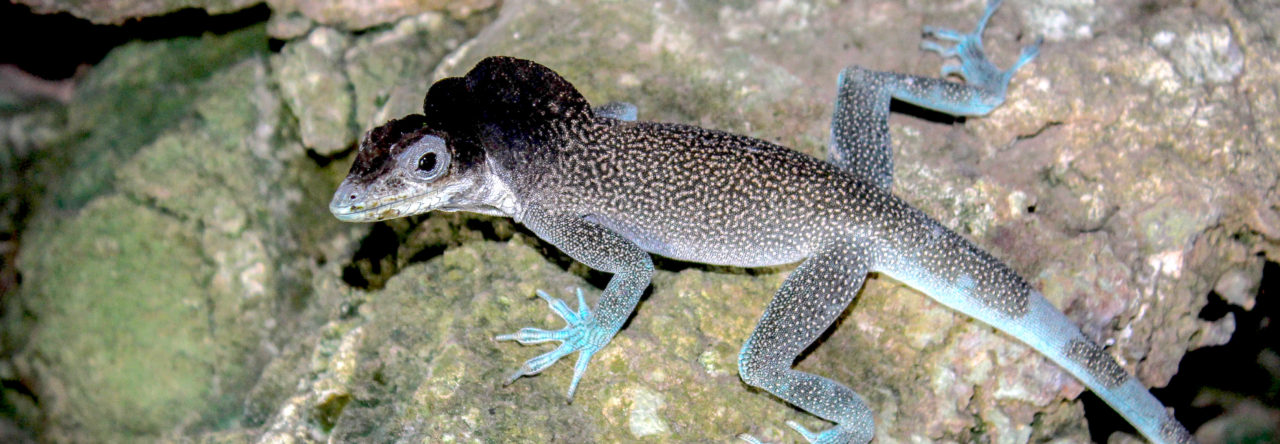 Pop on over to Dust Tracks on the Web and help Janson decide if this majestic fellow is a sagrei or a cristatellus…or something else. And read some of his other recent posts on anole adventuring.
Pop on over to Dust Tracks on the Web and help Janson decide if this majestic fellow is a sagrei or a cristatellus…or something else. And read some of his other recent posts on anole adventuring.
Latest posts by Jonathan Losos (see all)
- Evolution in Real Time on Lizard Island - March 23, 2025
- Spider Snags Adult Anolis osa - March 22, 2025
- An Homage to the Green Anoles of New Orleans - March 21, 2025


hispanioland
Nice photo of the anole in its environment… A. sagrei?
Hispanioland
Correction: in its current environment (not native), but according to his cocky pose, it seems he is really making it his own.
Rich Glor
Cool photo of a big ol’ A. sagrei
BilBy
What are the key features to differentiate sagrei from cristatellus? I recently saw some ‘sagrei’ that had huge nuchal crests, dorsal crests and even what looked like caudal crests. I’m no longer sure of my sagrei vs cristatellus differentiation skills
Wes Chun
I would also say sagrei. The light streak on the edge of the dewlap is a giveaway.
Janson Jones
Many thanks, everybody. I’m fairly convinced this dude is A. sagrei. Its relative height in the tree was what originally made me suspicious (about eight feet above the ground), not to mention the stark figure-ground contrast of those dark browns and yellows (*and* the fact that I was in south Florida, the mecca of anything-goes ecology).
There was also another similar individual on a nearby tree, about six or seven feet from the ground (http://dusttracks.com/2011/09/06/brown-black-and-yellow-more-than-colors-a-state-of-being/). Not sure why they were so high up. I’m used to Cuban browns being pretty low on the trunk-ground range.
These two were definitely larger than the standard low-riders in the park. Do older, larger brown anoles assert their dominance by climbing higher and posturing? Neither of these individuals was specifically bobbing or fanning their dewlaps, but they sure had some choice property overlooking the younger, smaller folks down below.
Anyhow, rockin’ thanks for the feedback! It’s great appreciated ~
~ janson
Rich Glor
I’m not sure if specific diagnostic features visible in this photo. I’ve seen lots of sagrei and lots of cristatellus and am just going on gestalt. Among the features that indicate sagrei were the dorsal patterning, the yellow dewlap margin, and the shape of the head and neck (I think the skull of A. sagrei and related taxa is not as sharply delimited from the neck as it is in other species of trunk-ground anoles).
You’d think one of the folks who’s done surveys of A. sagrei would have some information on whether larger individuals perch higher.
Liam
I agree that this looks like A. sagrei not A. cristatellus (although this seems fairly well established by the previous comments).